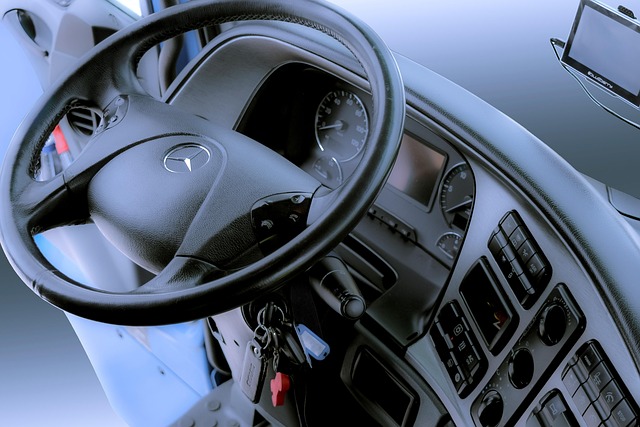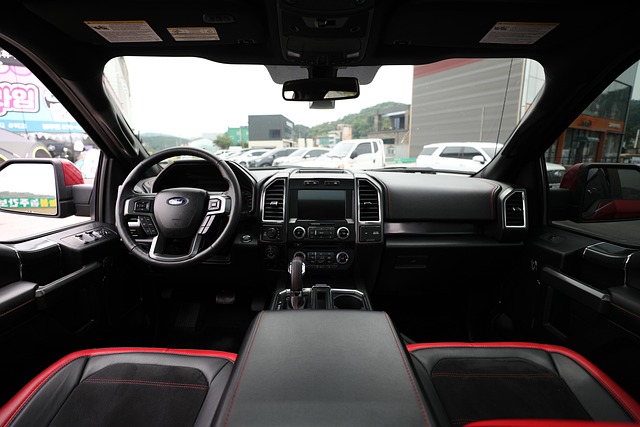Looking to register your car in California? This comprehensive guide walks you through the process, ensuring a smooth experience. First, understand the essential requirements for car registration in California, including residency and vehicle condition checks. Next, gather all necessary documents, including proof of ownership and insurance. Perform a crucial VIN verification to ensure your vehicle’s authenticity. Visit a DMV office or use online services, then pay the required fees to finalize the registration.
- Understand the Requirements for Car Registration in California
- Gather Necessary Documents for Vehicle Registration
- Perform VIN Verification: Steps and Importance
- Visit a California DMV Office or Use Online Services
- Pay the Registration Fees and Finalize the Process
Understand the Requirements for Car Registration in California

Before you begin the registration process, it’s crucial to understand the requirements for car registration in California. All vehicles operated on California roads must be properly registered with the Department of Motor Vehicles (DMV). This involves verifying ownership and ensuring the vehicle meets safety and emission standards. One key aspect is the Vehicle Identification Number (VIN) verification, which serves as a unique identifier for your car.
In California, you’ll typically need to provide proof of identification, insurance, and payment for fees. A mobile VIN inspection or mobile VIN verifier can simplify this process by providing on-site vehicle history reports, ensuring all details are accurate and up-to-date. This not only saves time but also helps prevent registration errors. Remember, proper registration is essential for legal driving and access to California’s roads.
Gather Necessary Documents for Vehicle Registration

Before you start the registration process, make sure to gather all the essential documents required by the California Department of Motor Vehicles (DMV). One crucial document is the Vehicle Identification Number (VIN) verification. This step involves a thorough inspection of your vehicle’s unique VIN, which can be done through a mobile vin verification or vin inspection. By providing the accurate and current VIN, you ensure that the DMV has all the necessary information to complete the registration.
Among other documents, you’ll need proof of identity (such as a driver’s license or passport), proof of insurance, and payment for the registration fee. Additionally, if you’re transferring ownership, a completed Bill of Sale or a similar document from the previous owner is mandatory. Having these documents ready will streamline the registration process and help avoid any potential delays.
Perform VIN Verification: Steps and Importance

Before registering your car in California, performing a Vehicle Identification Number (VIN) verification is a crucial step. This process involves checking the vehicle’s history and ensuring its authenticity by comparing the provided VIN with records from various databases. You can do this through an online check or by contacting the California Department of Motor Vehicles (DMV). A common and convenient option is to avail of a mobile vin inspection or vin inspection service, allowing you to verify the VIN without visiting a DMV office.
The importance of VIN verification lies in its ability to detect any discrepancies, accidents, or potential fraud associated with the vehicle. It ensures that the car has not been reported stolen, has no outstanding loans or liens, and meets safety standards. By completing this step, you can rest assured that your car registration process will be smoother, faster, and more secure, as it plays a vital role in establishing the legitimacy of your vehicle.
Visit a California DMV Office or Use Online Services

In California, registering your car involves either visiting a DMV office or utilizing online services. If you prefer the traditional approach, head to any California Department of Motor Vehicles (DMV) location. Bring along essential documents like proof of ownership, vehicle identification number (VIN) verification, valid ID, and necessary registration fees. A mobile vin verifier can be handy for quickly and conveniently conducting a VIN inspection during your visit.
Alternatively, the state offers online registration through its official website. Here, you’ll need to input your vehicle’s information, including its unique VIN, to initiate the process. Online services often include a mobile vin verification option, allowing you to confirm your car’s details from the comfort of your home. This digital approach streamlines the registration experience, especially for those with busy schedules.
Pay the Registration Fees and Finalize the Process

After completing the necessary paperwork, the next step in registering your car in California is to pay the registration fees. These fees cover various costs associated with vehicle registration, including administrative charges and emissions testing. The amount you’ll pay depends on factors like your vehicle’s type, age, and fuel efficiency. It’s essential to ensure that your vehicle meets all emission standards before proceeding; a mobile VIN verification or inspection can help confirm this, making the process smoother.
Once you’ve paid the fees, the registration process is nearly complete. You’ll receive your vehicle’s registration documents in the mail within a specified timeframe. Remember to keep these documents secure and up-to-date, as they are essential for future reference and proof of ownership. With all the required steps taken, including the successful completion of a mobile VIN inspection, your car will be officially registered and ready to hit the California roads.
Registering a car in California is a straightforward process once you understand the requirements and have all the necessary documents. Completing a thorough VIN verification is crucial, ensuring your vehicle’s history is accurately checked. You can either visit a DMV office or use online services for a convenient registration experience. By following these steps and paying the required fees, you’ll have a smoothly registered vehicle in no time. Remember to keep your documentation up-to-date for future reference and easy renewals.
